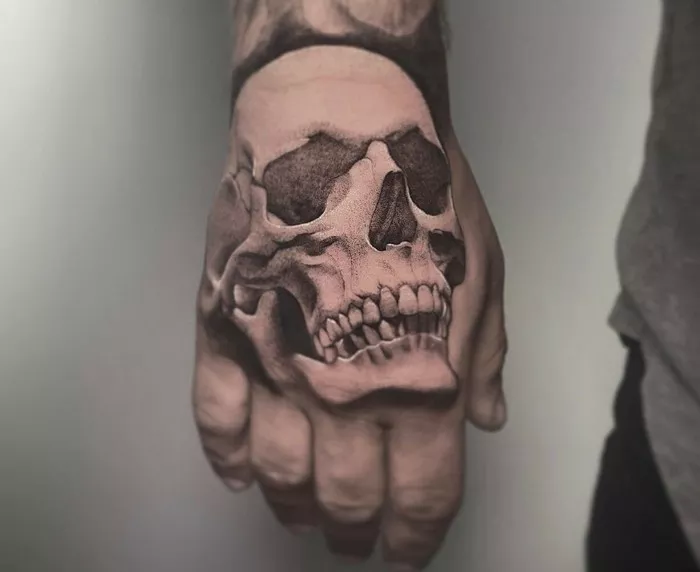Creating a skull tattoo can be a thrilling artistic journey. Skull tattoos hold deep symbolism and are popular in various cultures. This extensive guide will walk you through every step of drawing a skull tattoo, from understanding its symbolism to perfecting the details. Whether you’re a beginner or an experienced artist, you’ll find valuable techniques and insights here.
1. Understanding Skull Symbolism
1.1 The Historical Significance of Skull Tattoos
Skulls have been symbols of mortality and the cycle of life for centuries. This section will explore their historical context and significance in different cultures.
1.2 Modern Interpretations of Skull Tattoos
Today, skull tattoos represent various meanings, from rebellion to protection. Here, we discuss how contemporary artists and individuals interpret skulls.
1.3 Popular Cultural References
Skulls have appeared in pop culture, influencing tattoo designs. This section highlights notable instances of skulls in art, music, and media.
2. Materials Needed for Drawing Skull Tattoos
2.1 Essential Drawing Supplies
Before you start, it’s vital to gather the right materials. This section outlines the tools you’ll need, including pencils, paper, and inks.
2.2 Choosing the Right Paper
The type of paper you use can affect your drawing quality. Here, we discuss various options and their advantages.
2.3 Digital Drawing Tools
For those interested in digital art, this part covers software and tablets suitable for drawing skull tattoos.
See also: How to Get a Tattoo Without Pain: Tips and Techniques
3. Basic Anatomy of the Skull
3.1 Learning Skull Anatomy
Understanding skull anatomy is crucial for realistic designs. This section breaks down the different parts of the skull and their functions.
3.2 Sketching Basic Skull Shapes
Before diving into details, you’ll need to practice sketching basic skull shapes. This part provides step-by-step instructions on creating skull outlines.
3.3 Proportions and Measurements
Getting the proportions right is key to a believable skull. Here, we discuss techniques for measuring and ensuring accurate ratios.
4. Drawing Techniques for Skull Tattoos
4.1 Outlining the Skull
The first step in creating your skull tattoo design is outlining. This section provides tips on making clean and precise outlines.
4.2 Adding Details
Details like teeth, eye sockets, and nasal cavities bring your skull to life. This part discusses how to add depth and dimension effectively.
4.3 Shading Techniques
Shading adds realism to your skull tattoo. Here, we explore different shading methods, including hatching, stippling, and blending.
4.4 Incorporating Texture
Texture can elevate your design. This section discusses techniques for adding texture to the skull, such as cracks or engravings.
5. Creative Skull Tattoo Designs
5.1 Traditional Skull Tattoos
Explore classic designs, including the traditional skull and crossbones. This part will provide examples and inspiration for your tattoo.
5.2 Floral Skull Tattoos
Floral elements can soften the skull design. Here, we discuss how to integrate flowers and foliage into your tattoo art.
5.3 Geometric Skull Tattoos
Geometric patterns can give a modern twist to skull designs. This section covers how to incorporate geometric shapes and lines into your art.
5.4 Skull with Other Elements
Adding elements like wings, flames, or animals can enhance your design. This part explores ways to combine skulls with other imagery.
6. Finalizing Your Skull Tattoo Design
6.1 Reviewing and Refining Your Drawing
Once you’ve completed your design, it’s time to refine it. This section discusses how to review your work and make necessary adjustments.
6.2 Inking Your Drawing
If you’re planning to turn your drawing into a tattoo, inking is crucial. Here, we provide tips on inking techniques for clean lines and smooth shading.
6.3 Preparing Your Design for a Tattoo Artist
If you’re handing your design over to a tattoo artist, knowing how to present it is vital. This section offers advice on preparing your artwork for professional tattooing.
7. Common Mistakes to Avoid
7.1 Overcomplicating the Design
Less can be more. This part discusses how to avoid cluttering your design with unnecessary details.
7.2 Ignoring Anatomy
A poorly proportioned skull can look unrealistic. Here, we emphasize the importance of studying anatomy and proportions.
7.3 Skipping the Sketch Phase
Jumping straight to inking can lead to mistakes. This section underscores the value of sketching before finalizing your design.
8. Learning from Others: Famous Skull Tattoo Artists
8.1 Profiles of Renowned Artists
Learning from the pros can provide inspiration. This section profiles famous tattoo artists known for their skull designs and their unique styles.
8.2 Analyzing Their Techniques
Examining how established artists approach skull tattoos can help you improve your skills. This part breaks down their techniques and philosophies.
9. Practice MakesPerfect
9.1 Building Your Skills Through Repetition
Consistent practice is key to mastering skull tattoos. This section discusses how to develop your skills through repeated drawing.
9.2 Seeking Feedback
Constructive criticism can help you grow as an artist. Here, we explore how to seek feedback from peers and mentors.
9.3 Joining Art Communities
Engaging with fellow artists can enhance your learning. This part discusses the benefits of joining online or local art communities focused on tattoo design.
10. Conclusion: Embracing Your Artistic Journey
Drawing a skull tattoo is more than just a skill; it’s an artistic expression. By following this guide, you’ll develop your techniques, refine your style, and create unique skull designs. Remember, every artist has their journey—embrace yours and enjoy the process of creation!
You Might Be Interested In
Mastering the Art of Drawing Tattoos on Paper: A Full Guide
Illustration Style Tattoos: A Detailed Exploration of Artistic

